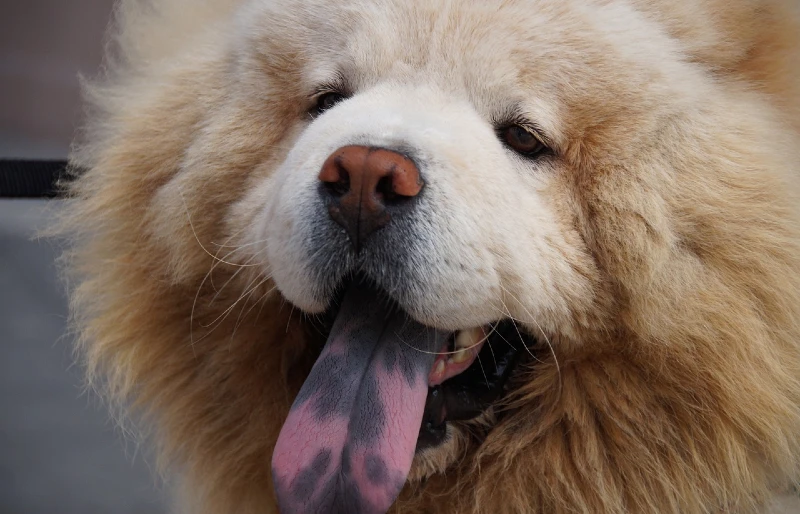Why Is My Dog’s Tongue Purple? 5 Vet-Approved Reasons
Updated on

The inside of your dog’s mouth can tell you a lot about his overall health. More specifically, the color of his gums and tongue can provide a clear picture of his wellness. Most healthy pups have pink tongues, thanks to the blood supply in the muscle.
However, if it suddenly changes color, it could indicate that he is unwell.
A purple-blue tongue can be completely normal if your pup is a certain breed, but if it is typically pink and now presenting as purple, it may be a cause for concern. It could be something as simple as eating a new food, but there may be more serious conditions at work.
Read on to learn more about purple dog tongues and how to know when it’s time to take your dog to the vet.
What Dog Breeds Have Purple Tongues?
While most dog breeds have pink tongues, a few naturally have blue ones. While purple isn’t a naturally occurring color in dog tongues, blue tongues, sometimes called black tongues, may be mistaken for purple.
This unique coloration occurs when dogs have extra pigmentation on their tongues. Just as some dogs and cats have colored “points” on their paws, nose, lips, and eye areas, others can develop dark tongues due to an overproduction of melanocytes.
Chow chows and Shar-Peis always have solid blue tongues, while breeds like the Eurasier and the Thai Ridgeback may have spotted black- or solid-colored blue-black tongues. Other purebreds and hybrids may occasionally develop blue tongues or pink ones with blue spots.

What Does a Purple Tongue Mean?
If your dog’s normally pink tongue is suddenly purple, you’re right to be concerned. However, a purple tongue isn’t always a cause for concern. Let’s look at some of the reasons why your pup may suddenly be sporting a purple tongue.
1. He Ate Something Funky
One of the most common reasons your pup’s tongue turned purple is his diet. Look at what you’ve been feeding him lately. Have you introduced a new food or treat? A dog’s tongue can change color due to his diet, as ours may turn colors when we eat certain foods. Eat a handful of blueberries and check your tongue afterward to see what color it’s changed. The same can happen to your pup.

2. He Chewed Something Different
If food isn’t the culprit, check your dog’s toys. Does he have a new purple-ish colored toy he’s been chewing a lot? It could be that the dye used to color the toy has transferred to his mouth.
3. He Bruised His Tongue
Dogs can be mischievous little buggers and get into trouble when we’re not looking. If your pup has recently gotten into some oral-related predicament, he may have bruised his tongue. Physical trauma can cause patches of bluish-purple on your pup’s tongue.

4. He’s Suffering From Lack of Oxygen
While the above situations should be the first you consider when you notice your pup sporting a purple tongue, it could be that something more serious is occurring. A bluish-purple tongue can indicate a lack of oxygen (hypoxia) in your dog’s bloodstream. Hypoxia can be caused by many things, and require immediate veterinary attention.
5. He Has Heatstroke
Any hot environment may cause your dog to develop heat stroke. Some dogs, such as those with thick fur, short noses, or those with certain medication conditions, may be at more risk of developing heat stroke. You must know your dog’s risk factors and use common sense when spending time outside with your dog in the summer.
A dark red, purple, or blueish tongue could signify heatstroke. Other signs include heavy panting, glazed-over eyes, excessive thirst, rapid heartbeat, fever, and lethargy. Heatstroke is a veterinary emergency, in most cases.

Final Thoughts
A purple tongue can be a cause for concern or the result of what your pup has been putting in his mouth. Some dog breeds are even born with purple-ish tongues. If your dog’s tongue is typically pink but suddenly purple, you’ll need to investigate to determine the cause. If behavioral changes or other concerning signs accompany the color change, an immediate visit to the vet should be in order.
Featured Image Credit: MartinHolzer, Pixabay













